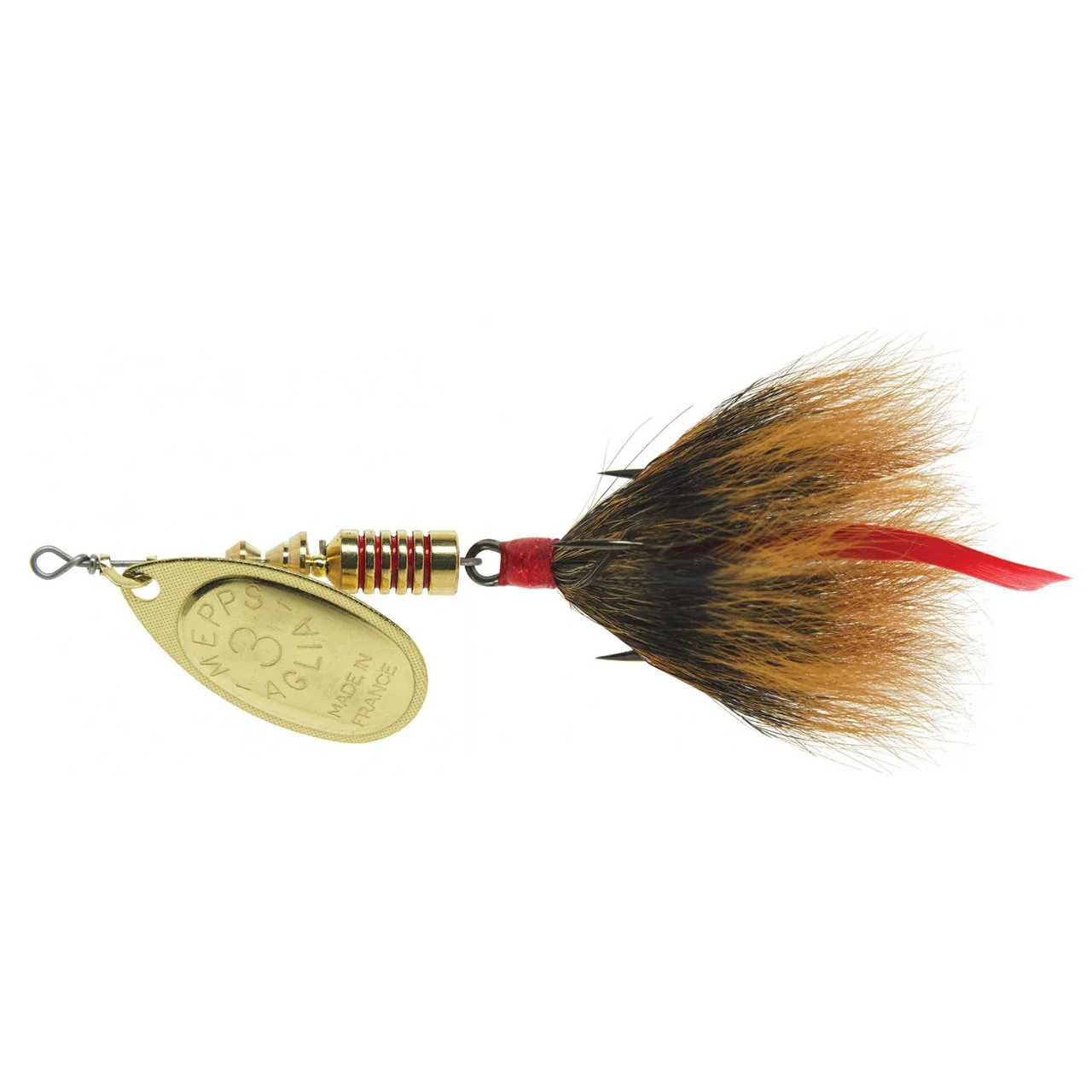The Mepps Spinner

* This page contains affiliate links. The Great Lakes Fisherman may earn a commission on items purchased through these links. For more on this, please click here.
Fishing with a Mepps spinner is a time-tested technique that has consistently proven effective across various fishing conditions and species. Whether you’re targeting trout in mountain streams or bass in lakes, the Mepps spinner’s versatility and reliable action make it a favorite among anglers worldwide. In this guide, I’ll delve into the essentials of using a Mepps spinner effectively to enhance your fishing experience.
Understanding the Mepps Spinner
The Mepps spinner is renowned for its simplicity and effectiveness. It consists of a blade (often metallic and reflective) that rotates around a shaft, creating flash and vibration underwater. This design mimics the movement of a small fish or insect, enticing predatory fish to strike.
Choosing the Right Mepps Spinner
Mepps spinners come in various sizes and colors, each suited for different fishing conditions.
Choose a spinner size based on the target species. Smaller sizes (e.g., 0 to 2) are ideal for trout, panfish, and smaller species, while larger sizes (e.g., 3 to 5) are better for bass, pike, and walleye.
The blade color can influence fish behavior. Bright colors like chartreuse or red can be effective in murky waters, while silver or gold blades work well in clear water.
Gear Setup
To fish with a Mepps spinner effectively, use a light to medium-weight spinning rod and reel combo. Here’s a basic setup:
- Rod: A 6 to 7-foot rod with a light to medium action.
- Reel: Match the reel size to your rod and fishing line.
- Line: 4 to 10-pound monofilament or fluorocarbon line, depending on the target species and fishing conditions.
Fishing Techniques
- Casting: Cast the Mepps spinner upstream or across the water body you’re fishing. Allow it to sink briefly before starting your retrieve.
- Retrieve Speed: The key to fishing a Mepps spinner lies in the retrieve speed. Start with a slow to medium retrieve, allowing the spinner to spin and produce flash and vibration. Adjust your retrieve speed based on fish activity and water conditions.
- Depth Control: Vary the depth at which you fish by adjusting your retrieve speed and the angle of your rod tip. This versatility allows you to target fish holding at different depths.
- Pause and Twitch: Occasionally pause your retrieve and give the rod tip a slight twitch. This can mimic the erratic movements of injured prey, triggering predatory strikes.
Targeting Specific Fish Species
- Trout: Use smaller Mepps spinners (sizes 0 to 2) in streams and rivers. Focus on pools, riffles, and eddies where trout often lie in wait.
- Bass and Pike: Opt for larger Mepps spinners (sizes 3 to 5) when targeting bass and pike in lakes and larger bodies of water. Target weed edges, drop-offs, and structure where predatory fish lurk. (My favorite Mepps spinner for pike is this one.)
Tips for Success
- Be Observant: Pay attention to water conditions and adjust your tactics accordingly.
- Experiment: Try different spinner sizes, colors, and retrieve speeds until you find what works best on a given day.
- Consistency: Practice and consistency in your retrieve technique can often make a difference between a good day and a great day of fishing.
Conclusion
Fishing with a Mepps spinner is not just about technique; it’s about understanding fish behavior and adapting to the environment. With its proven track record and versatility, a Mepps spinner can elevate your fishing adventures to new heights. Whether you’re a seasoned angler or just starting out, the Mepps spinner is a valuable addition to any tackle box, promising excitement and success on the water. Happy fishing!
